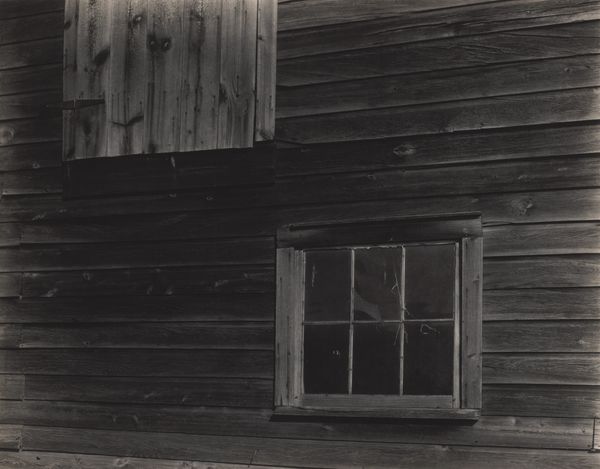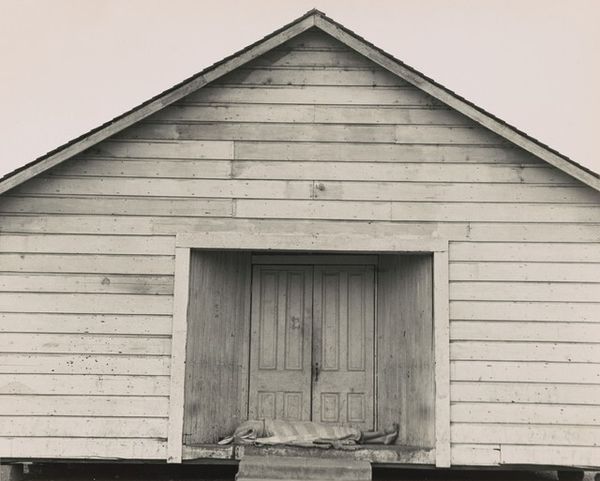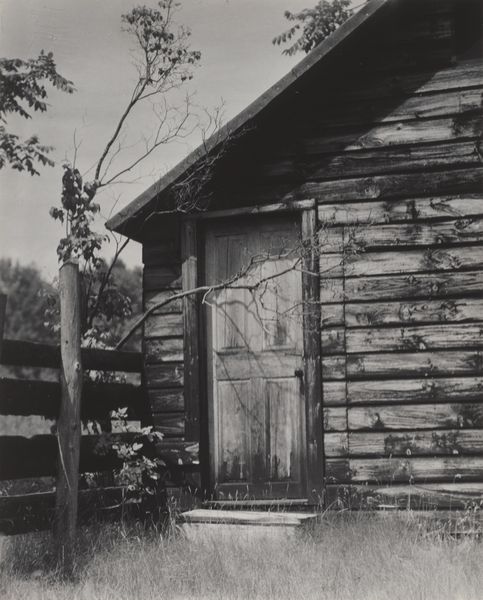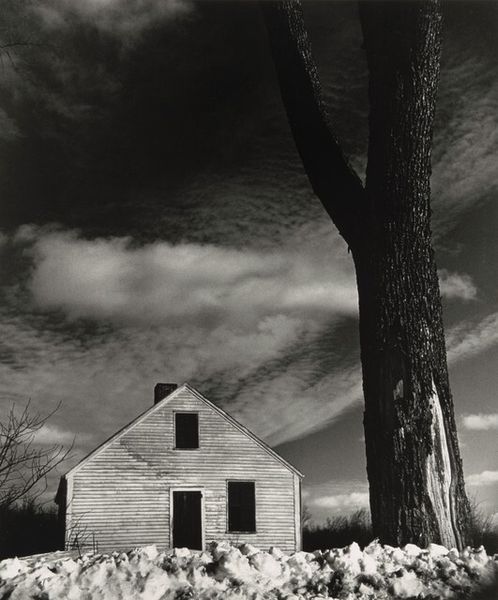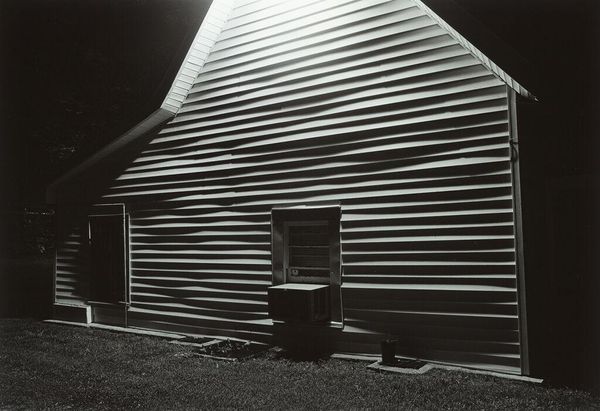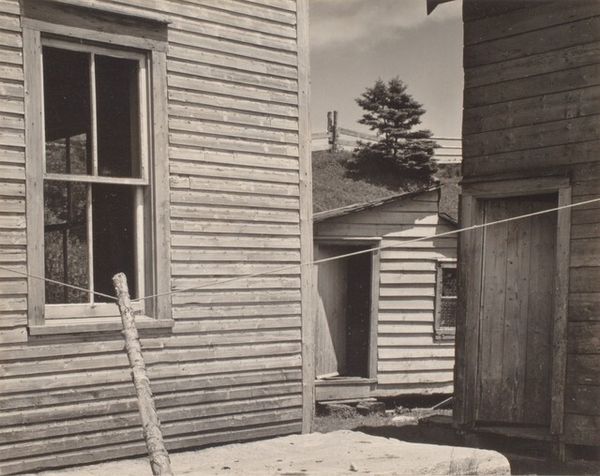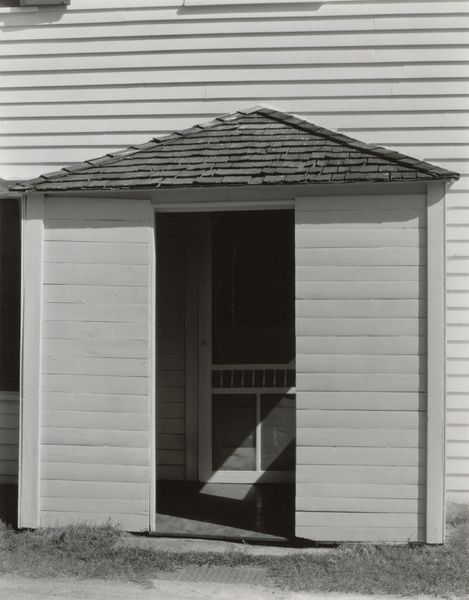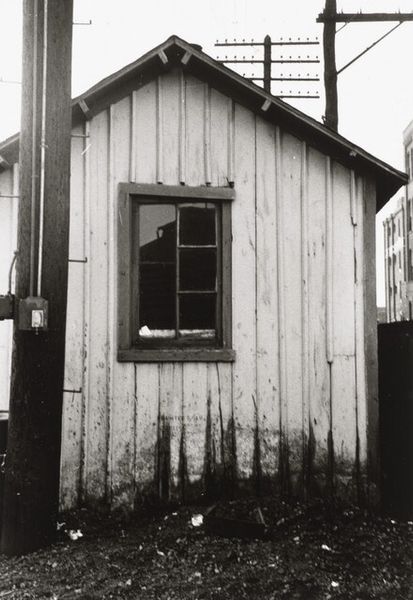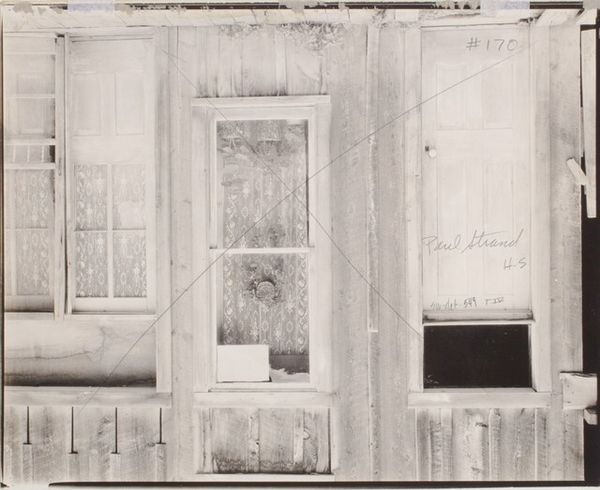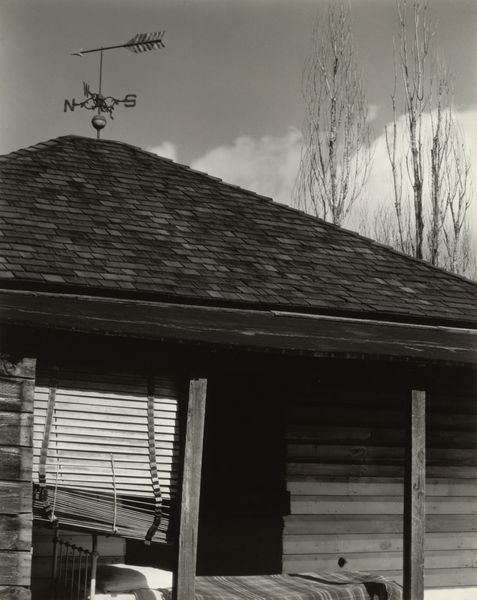
photography
#
landscape
#
street-photography
#
photography
#
abstraction
#
modernism
#
realism
Dimensions: overall: 19.2 x 24.2 cm (7 9/16 x 9 1/2 in.)
Copyright: National Gallery of Art: CC0 1.0
Curator: Here we have Frederick Sommer’s "Taylor, Arizona," taken in 1945. What catches your eye initially? Editor: Well, the somber gray scale definitely lends a feeling of quiet decay. That broken wooden panel beneath the window… it's as if the house itself is wounded. Curator: Precisely. The image presents a detail of weathered wooden siding, dominated by a window offering a glimpse into darkness. Sommer, known for his sharp focus and modernist aesthetic, transforms the ordinary into something quite striking. Editor: I see that. It reminds me a little bit of Walker Evans’ documentary approach, yet there's something unsettling, too. A suggestion of loss or abandonment, conveyed through those drooping lines of the aged wood, even evoking images of mourning in early American culture, the way they displayed grief publicly. Curator: An interesting read. But the choice of materials is what truly resonates. The labor involved in building these simple homes and buildings, the physical realities of constructing communities in the Arizona landscape in the 40s... you know, it's also about the economic conditions, how people then built with limited resources. Editor: Yes, there's something so immediate and tangible about the hand-hewn quality here. It feels worlds away from today's manufactured perfection, calling on symbols of poverty. The window, of course, a classic motif of seeing and being seen… here, however, the interior is obscure, veiled. It creates a psychological distance. Curator: That veil you speak of reminds me of how he challenges our very notions of consumption. By immortalizing humble structures, Sommer elevates the material, redirecting value in times when standardized, manufactured items were prioritized over the basic means of human inhabitance. Editor: Looking closer, one finds something strangely beautiful in that dilapidation. Curator: Agreed, its very specific time is made iconic through capturing an image with what could be seen as an eye for material consciousness. A lasting visual legacy. Editor: Ultimately, this piece lingers in the mind long after viewing, due to those symbolic tensions around memory, loss and the artist’s skill. Curator: Indeed, it stands as an inquiry into the ways photography renders everyday realities into documents, loaded with social and historical meaning.
Comments
No comments
Be the first to comment and join the conversation on the ultimate creative platform.
